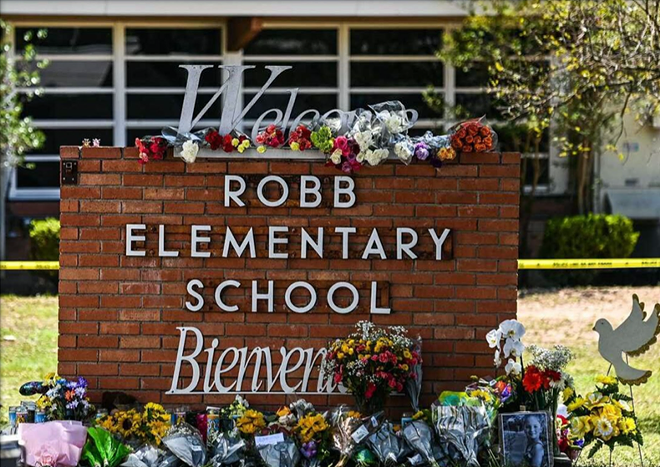
Courtesy Photo / Advanced Law Enforcement Rapid Response Training Center
A new report by a law enforcement training group identified multiple errors in the police response to the Uvalde school massacre.
A Uvalde police officer radioed for a supervisor's permission to fire at the shooter shortly before he breached the school, according to the study released Wednesday by Texas State University's Advanced Law Enforcement Rapid Response Training Center (ALERRT). That officer either didn't receive a response, or the reply came after the gunman had already entered.
Hearing gunfire and seeing a suspect approaching the school with an assault-style weapon should have been cause to fire without contacting a superior, according to ALERRT's analysis.
“A reasonable officer would conclude in this case, based upon the totality of the circumstances, that use of deadly force was warranted,” the document states.
The 26-page report's release comes as scrutiny swirls around law enforcement's sluggish response to the shooting that killed 19 children and two teachers at Robb Elementary School. Additional federal, state and local investigations are ongoing.
In addition to the officer's failure to fire at the suspect, ALERRT's report also charges that:
- One of the first responding officers didn’t spot the gunman while he was still in the parking lot because the officer approached the building too quickly in his vehicle instead of slowing his approach.
- Officers didn't engage the gunman quickly enough once he was inside the school. Although mounting a quick assault would have been risky, "the officers also would likely have been able to stop the attacker and then focus on getting immediate medical care to the wounded,” according to the report.
- Officers took positions on both ends of a hallway outside the classrooms where the shootings took place, which could have resulted in personnel shooting each other had the suspect exited and attacked.
- Law enforcement personnel continued to wait for equipment to arrive even though they had breaching tools, shields, CS gas and officers with tactical training on the scene 35 minutes before they finally entered the classroom.
"While we do not have definitive information at this point, it is possible that some of the people who died during this event could have been saved if they had received more rapid medical care," the study states.
The report notes that its findings aren't intended to "demean law enforcement" but to improve responses to future mass shootings.
Stay on top of San Antonio news and views. Sign up for our Weekly Headlines Newsletter.

